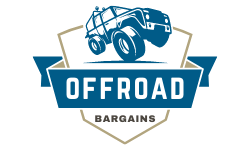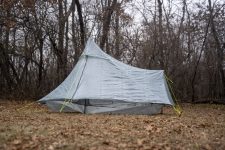
Zpacks Pivot Solo Tent Review| CleverHiker
Bottom Line
For a unique take on a one-person, two-trekking-pole tent, the Pivot Solo came out swinging and hit a home run. Without a doubt, this is one of the best ultralight tents on the market, and you can see more in our full guide. We loved its low weight, good floor space, and excellent livability. The key design feature is a secondary, shorter pole near the foot region that allows the main pole to shift backwards. This enables a large, L-shaped door and a more spacious interior.
The shorter pole at the end also places mesh between the foot area of the interior and the rainfly, protecting sleeping bags from condensation on the rainfly and utilizing all of the floor space more effectively than a design with sloping walls. That floor space extends a bit to the side, allowing for a backpack to be placed inside while sleeping, a luxury for many single-person tents.
While we haven’t taken it into storms for a complete test, the design should hold up well against inclement weather. The ultra-strong Dyneema Composite Fiber (DCF) rainfly, combined with a mostly pyramid-based design, means it should shed wind and rain like a champion.
It’s still a bit tricky to set up, like many trekking pole shelters, but we believe users will get used to it over time. Additionally, the interior floor to fly tensioners dangle into the head area, the high rainfly height means gusts and splashback can be problematic, and we wish the pockets were designed a bit better. Or simply gave us another one.
However, all of these are minor concerns when considering the tent as a whole. It manages to deliver a remarkably balanced shelter in both features and comfort while maintaining a notably low weight. Although this tent comes at a premium, we believe it is a worthwhile investment in the long run.
Quick Specs

Zpacks Pivot Solo
Best Balance of Comfort & Weight for One
CleverHiker Rating:
4.7/5.0
Price:
$649
Weight:
1 lb. 0.1 oz.
Dimensions (LxWxH):
84 x 29/42/28 x 52 in.
Floor Area:
21 sq ft
Pros
- Good floorspace
- Large peak vent
- No wet footbox concerns
Cons
- Tricky initial setup
- Small interior pocket
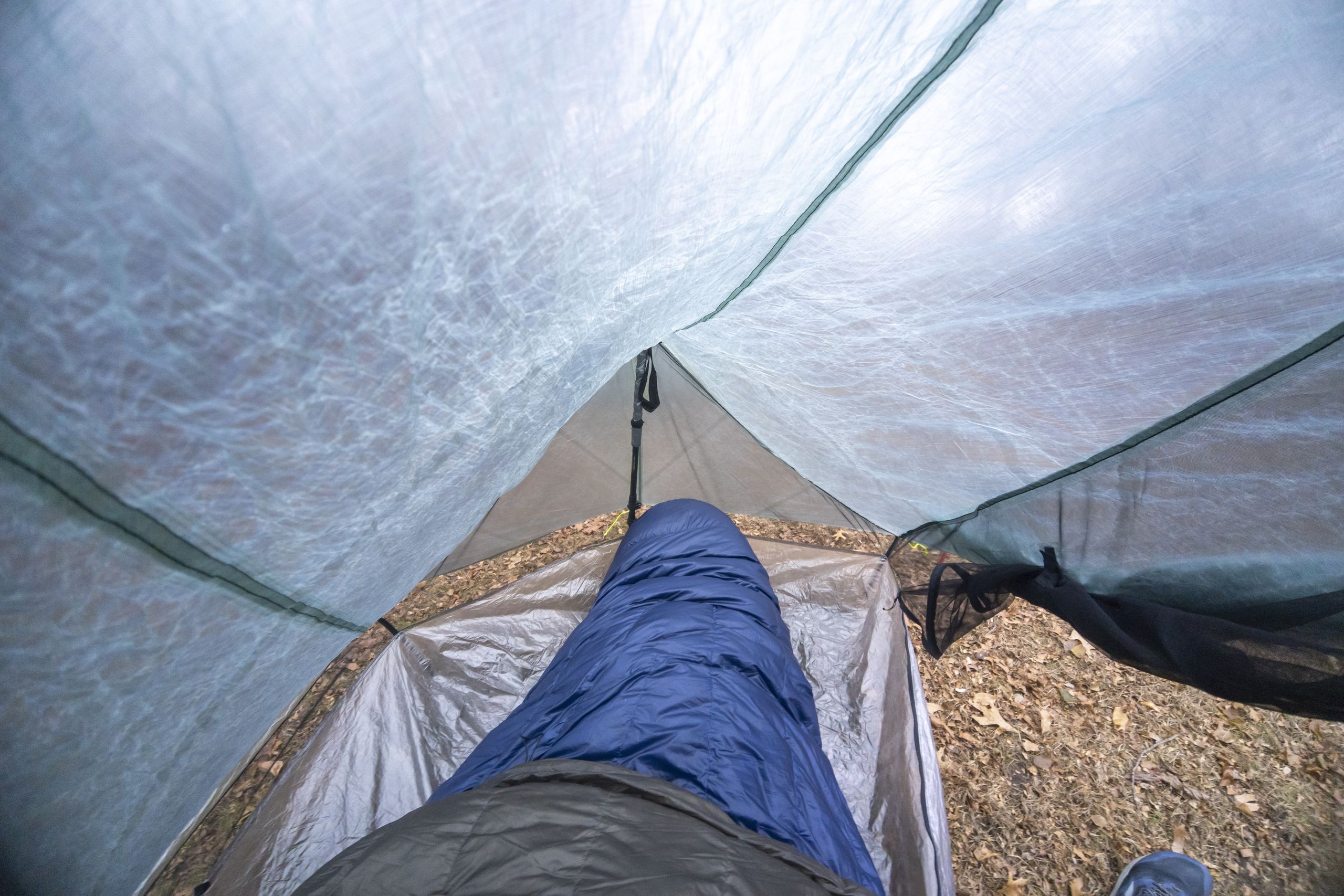
Comfort
With its innovative new design, the Pivot Solo offers impressive interior floor space and headroom, resulting in a comfortable experience overall. The shorter pole at the foot end allows for a wider floor area than a single pole design. This design feature ensured we could easily bring a backpack into the interior at night while still having room for other items.
Furthermore, the near-vertical mesh at the foot end keeps the rain fly away from the foot area, eliminating concerns about waking up with a wet footbox due to condensation. We found the headroom satisfactory for both lying down and sitting up, although the single peak limited the space available for changing clothes or stretching. However, for such a focused ultralight tent, this isn’t a significant drawback, and we would rate the Pivot Solo as above average for headroom in this weight class.
The vestibules are a decent size, but since the rain fly doesn’t extend all the way to the ground, splashback will be a concern during rainfall. They’re still large enough for a pack and a pair of shoes. We appreciate Zpack’s trend of incorporating waterproof zippers on their vestibules with a nice and smooth #3 zipper. On a negative note, the one interior pocket is disappointing. With a small angled mesh pocket, it’s big enough for a phone or headlamp, but not much else. Another minor annoyance is the interior fly-to-floor tension cord that dangles into the head area when lying down. We value these tension cords for adjustability, but the placement of the head one gets in the way.
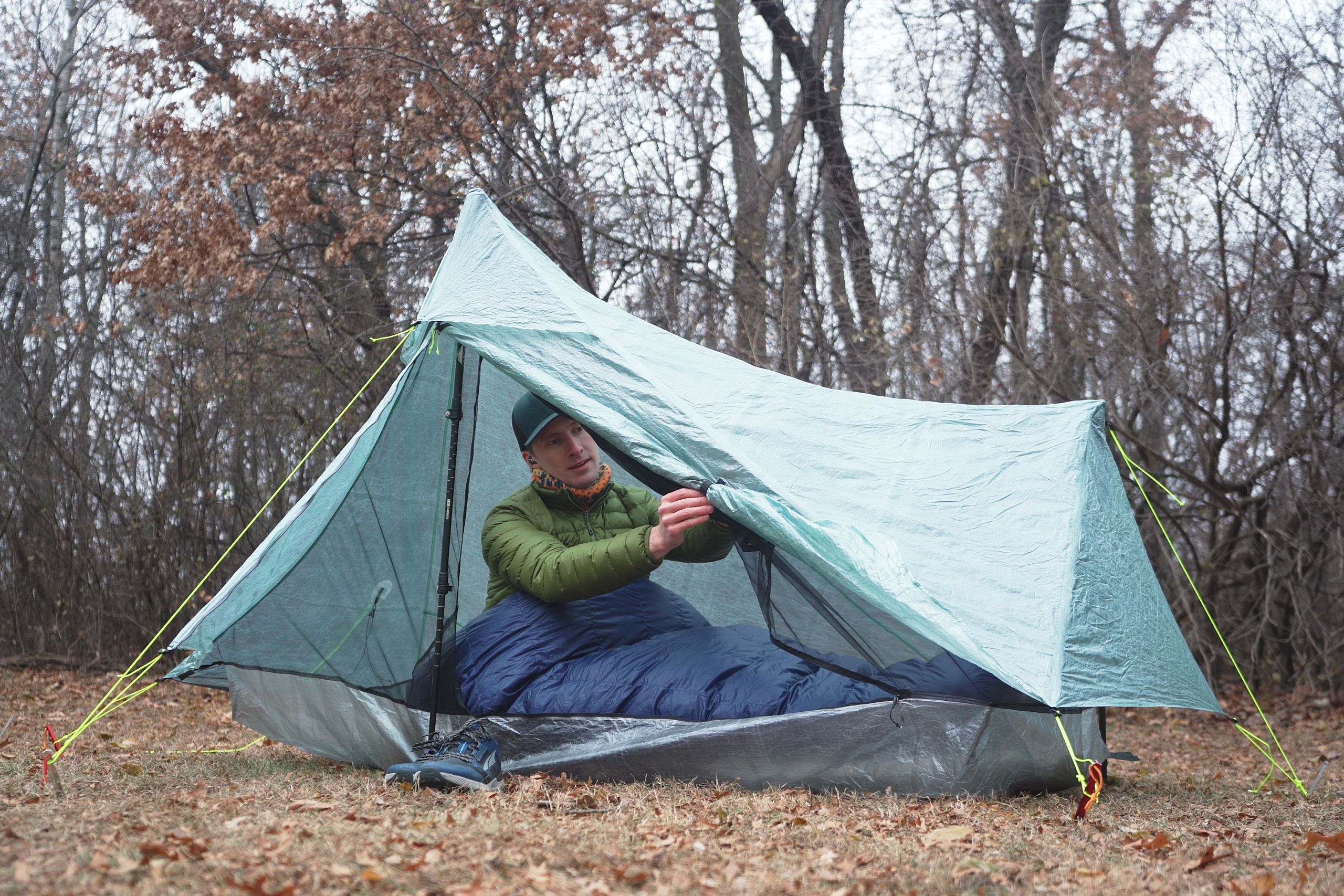
Weight
Zpacks managed a truly impressive weight of 16.1 ounces when we measured the Spruce Green version with a standard floor. For those counting ounces, they offer a lighter version using 0.55oz/sqyd DCF for the fly and a 0.75oz/sqyd floor that weighs in at 13.5 ounces.
While 0.55oz/sqyd DCF is a reliable material for the rainfly, we believe the added durability of the standard floor’s 1.0oz/sqyd material is a better general recommendation, especially if you want it to last for an entire thru-hike. DCF is an excellent fabric for tension resistance due to a network of ultra-strong Ultra High Molecular Weight Polyethylene (UHMWPE) fibers, making it ideal for a rainfly.
However, the relatively weak mylar layers sandwiching the UHMWPE fibers do not provide adequate puncture or abrasion resistance. Although the UHMWPE fibers in the thinner 0.55oz/sqyd DCF are incredibly tear-resistant, the improved puncture resistance of the heavier fabrics comes from additional layers of mylar rather than more fibers.
We still think the standard floor version is incredibly lightweight given the performance and comfort it provides. A minor drawback of using thicker DCF fabrics is that the packed size is larger compared to silnylon or silpoly tents. The Pivot Solo measures approximately 4×11 inches when tightly rolled and 5×12 inches when loosely rolled. Overall, we do not see this as a significant issue, but for backpackers who are more focused on pack volume over overall weight, the size can add up.
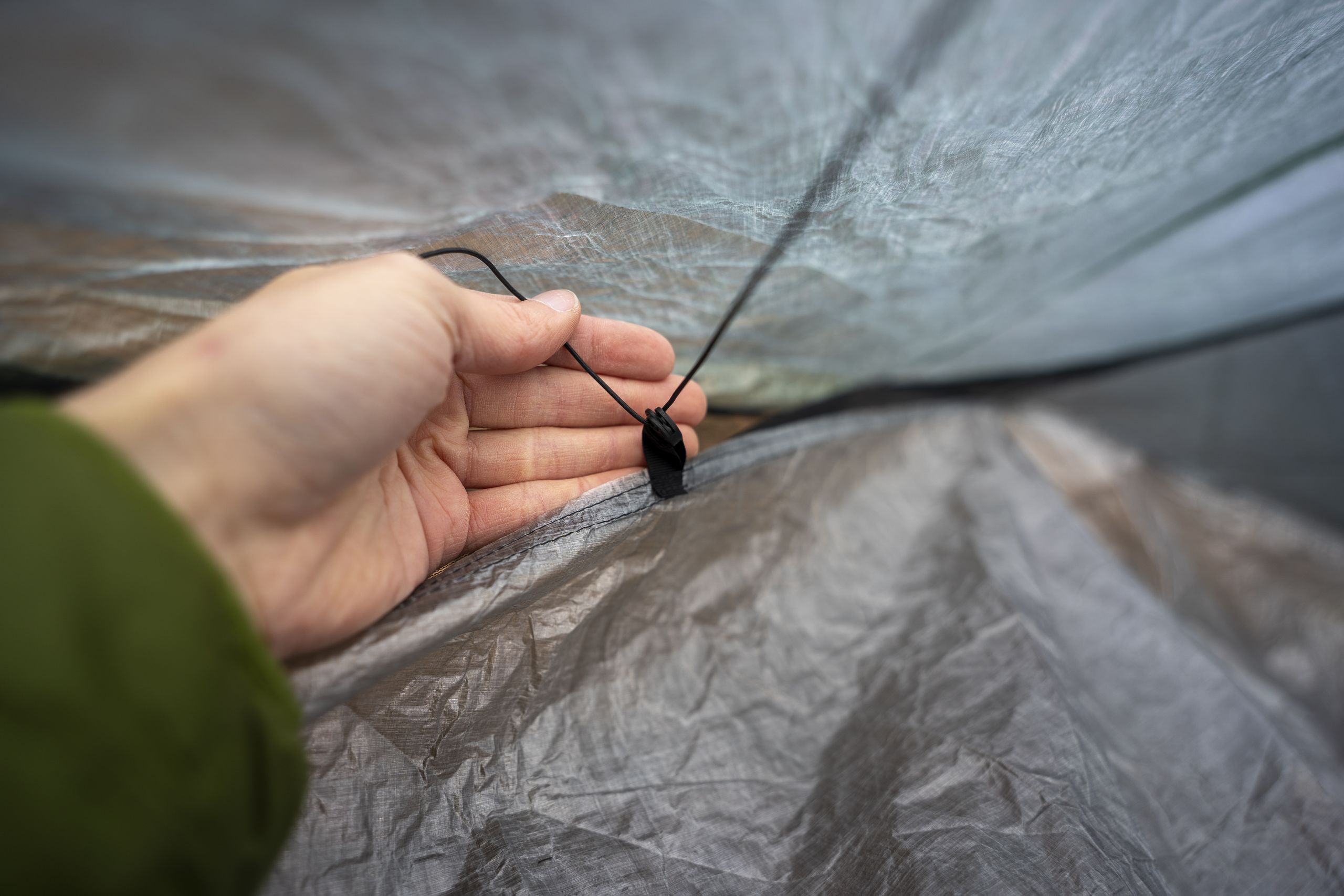
Ease of Use
Like all trekking pole tents, the Pivot Solo can be tricky to set up initially, but it becomes easier with practice. We consider it average for a trekking pole tent. The generous amount of cord on the corners and peaks also helps facilitate setup in situations with limited ground space flexibility.
Staking out the tent will be trickier if the ground is hard or many obstacles prevent ideal corner placement. Although freestanding tents perform better in these conditions, we found that the majority of nights spent with non-freestanding tents on various trails were issue-free during pitching. Additionally, large rocks can be used to secure the stakes if the ground isn’t suitable. Unlike silnylon, DCF doesn’t sag when wet, so once the Pivot Solo is pitched, it should remain taut throughout the night, regardless of how wet it gets.
One feature that makes the Pivot Solo great to use is the large L-shaped door. In a shift from their classic rainbow doors that zip from the top, Zpacks employs a design that zips from the bottom. This allows the mesh to hang from the ceiling rather than fall onto the dirt or interior of the tent as seen in other designs. Additionally, the offset pole ensures that getting in and out of the tent is easier without a pole obstructing the way.

Weather Resistance
The semi-pyramid shape of the Pivot Solo should make it a great tent for waiting out storms, but we have yet to take it into a real barn-tipper to test it firsthand. However, Zpacks has a track record of producing tents that withstand the elements well, and we can observe many of the same design choices present here that should provide the Pivot Solo with above-average weather resistance.
For starters, pyramid designs effectively shed wind, and that remains the basic structure here. The addition of a shorter pole at the foot end reduces the surface area that the wind can catch. Even better, with three stakes securing that end, it should easily withstand gusts. DCF is also a proven material, and especially considering the weights of the standard version, you’re far more likely to experience tent stakes pulling out than to see a failure in the fabric.
We appreciate the large peak vent design, which is held open by the door guylines. Although condensation management can be tricky and sometimes nearly impossible to avoid under certain conditions, the presence of the vent boosts our confidence that it will perform well here. We also wish there were an attachment point for a peak guyline to enhance weather resistance even further.
On a more polarizing note, the height of the rainfly above the ground is a design trade-off that will appeal to some but not to others. This height enhances airflow and reduces the overall weight of the tent by using less fabric.
On the other hand, splashback becomes a more significant issue with such a height, and on blustery nights, the airflow can turn into an annoyance instead of a benefit. We don’t hold Zpacks in a negative light for this design choice, however, since nearly every tent in their lineup shares this feature. It’s simply another design decision with its own advantages and disadvantages, and where it stands for you depends on your own priorities.

Durability
In the standard version we tested with 0.75oz/sqyd DCF fly and 1.0oz/sqyd DCF floor, we have very few concerns about durability. Zpacks has been using these same fabrics and construction techniques in some of the most popular and well-used backpacking tents for years, and with appropriate care, they should last a long time in use.
We haven’t taken the Pivot Solo on a long-distance thru-hike, so time will tell if Zpacks has delivered another solid shelter. But even based on our limited testing, we’re highly confident it should shrug off a thru-hike without issue.
Overall, the construction quality is excellent. Many years ago, Zpacks struggled with a reputation for quality control, but they have significantly improved, and it shows. The overall fit and finish of the seams looks great. We also appreciated the reinforced magnetic door closures, which feel solid.
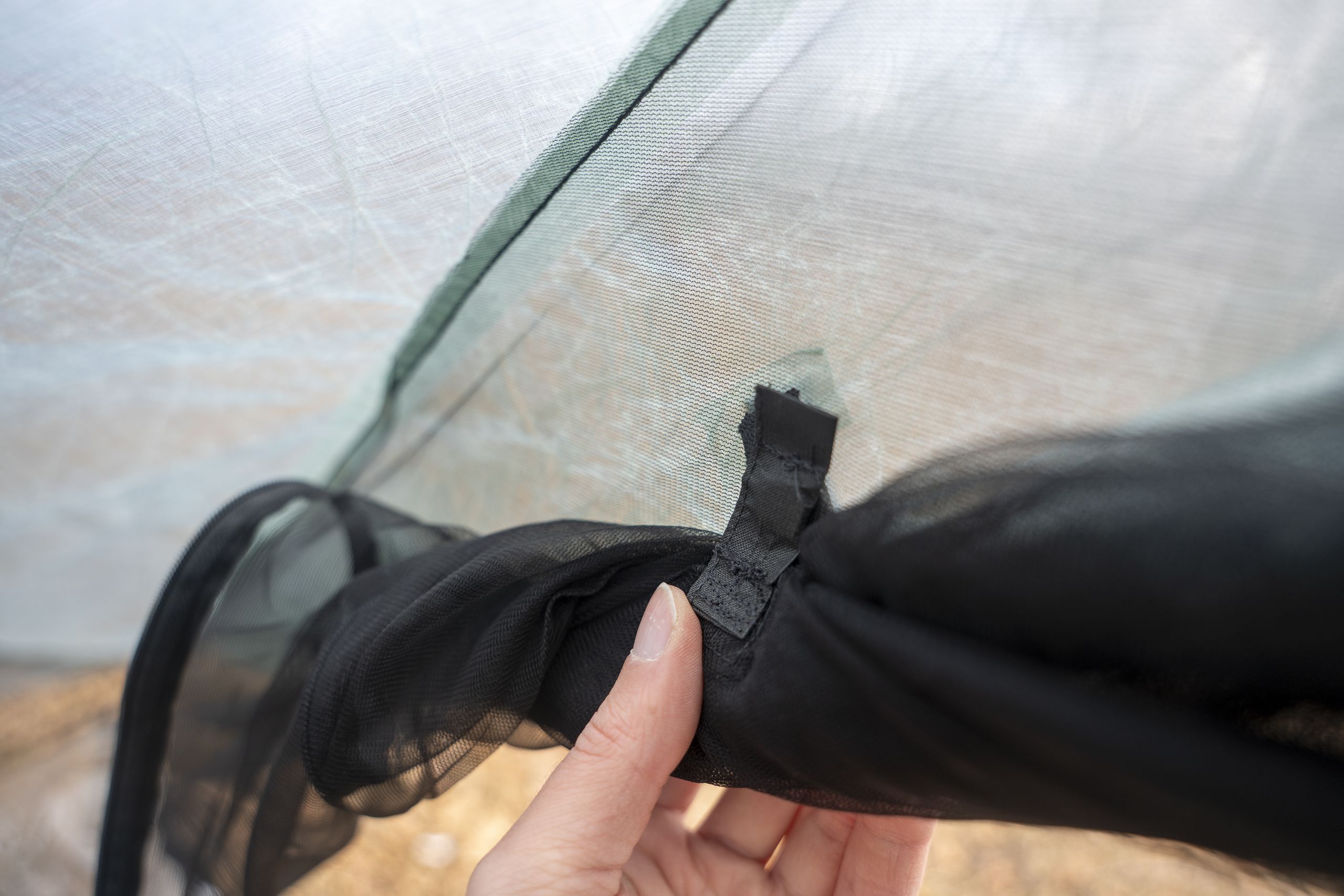
Should You Buy the Zpacks Pivot Solo Tent?
We really like this tent, and for the right person, we think Zpacks has another hit on their hands. If you’re the kind of person who seeks decent livability at an exceptionally low weight, the Pivot Solo checks many boxes. It’s ideal for long thru-hikes like the Pacific Crest Trail, where low weight is a priority.
Zpacks appears to be positioning this as a more livable alternative to their classic Plex Solo, with advantages such as a better door design, easier entry, and improved headroom. At the same time, individuals who might have been deterred from the Plex Solo in favor of the ultra-popular Duplex now have a reason to pause and consider that the Pivot Solo presents a tempting middle ground at a slightly lower weight and price.
However, there’s still no denying that the Pivot Solo is a premium piece of backpacking kit. With its full DCF construction, the price will be hard to swallow for those who aren’t living out of it for months on end. Still, we believe it’s a worthwhile investment for anyone on a long-distance trail and should withstand years of good use.
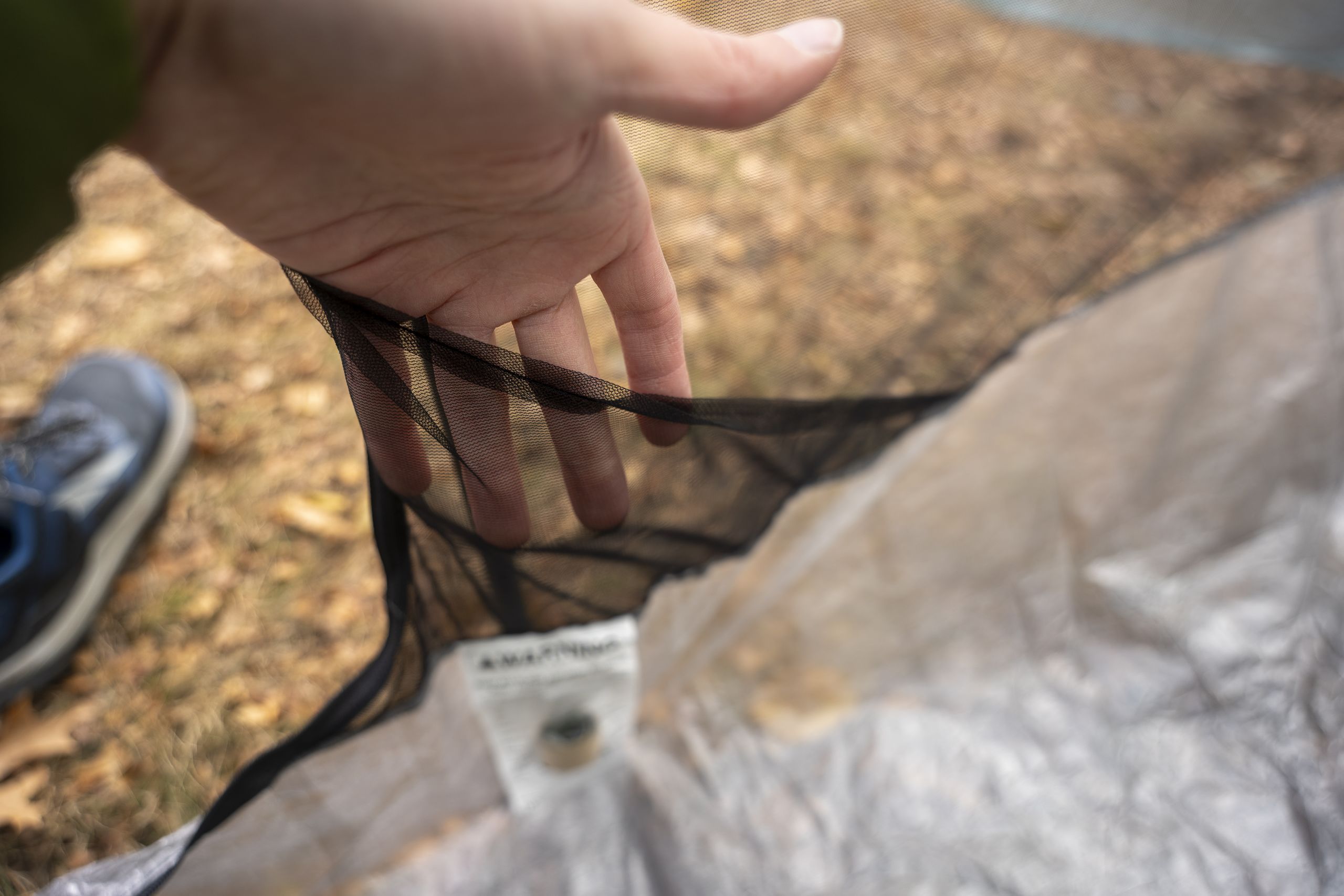
What Other Ultralight Tents Should You Consider?
If the Zpacks Pivot Solo Tent is the perfect fit, our best ultralight tents guide has many other options.
Durston X-Mid Pro 1 Review: The Pivot Solo and the X-Mid Pro 1 share a lot of similarities, down to a unique 2-pole design, waterproof zippers, an L-shaped door, and comparable weights. The X-Mid simply approaches challenges with different solutions, making it difficult to determine if it is definitively better. For our style of backpacking and the design tradeoffs we value, we do prefer the X-Mid; however, neither of these tents is fundamentally flawed- just different priorities in design choices. If a completely new backpacker asked us to choose, our preference for the X-Mid would become apparent, but at these prices, these are not ideal tents for beginners, and we can envision experienced backpackers falling in love with either option.
Six Moon Designs Lunar Solo Review: If the eye-watering price of the Pivot Solo is too much to bear, our favorite budget tent still excels with impressive performance at an unbeatable price. One advantage over the Pivot Solo is its much larger floor space, making it nearly suitable for two people. In fact, we’ve seen it utilized that way in a pinch! The downside is a significantly higher weight, but for first-time or experienced backpackers, it’s an excellent shelter.
Zpacks Offset Duo Review: If you liked the overall concept of the Pivot Solo but primarily backpack with another person or a fluffy friend, the Offset Duo is an excellent two-person shelter that is sure to delight. The design language here is quite similar, featuring the same L-shaped doors, zippers, and peak vents. However, the short interior pole is replaced with an exterior one, and it adds another door and vestibule for the other person.
